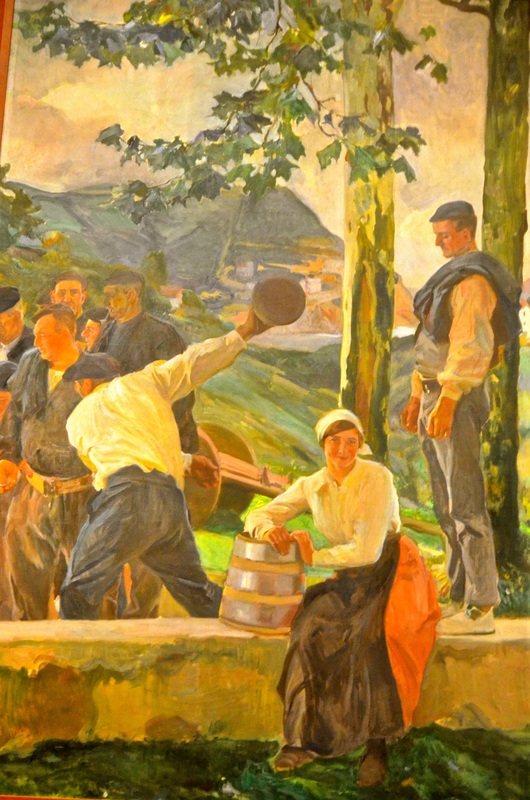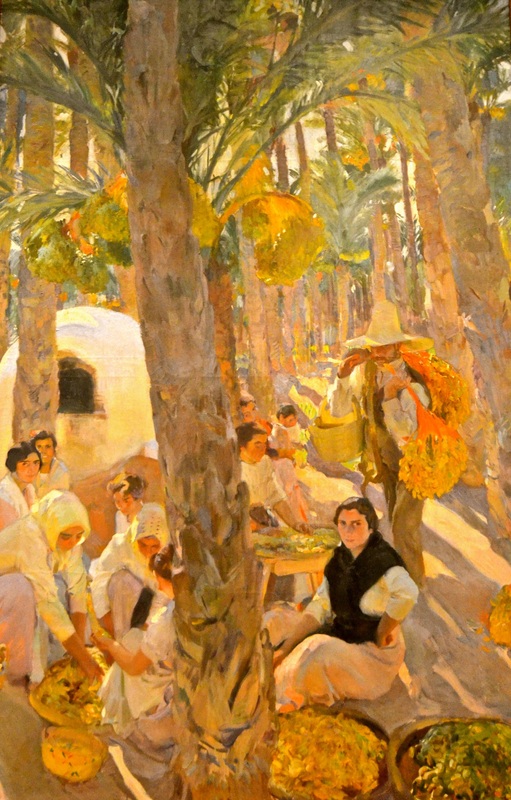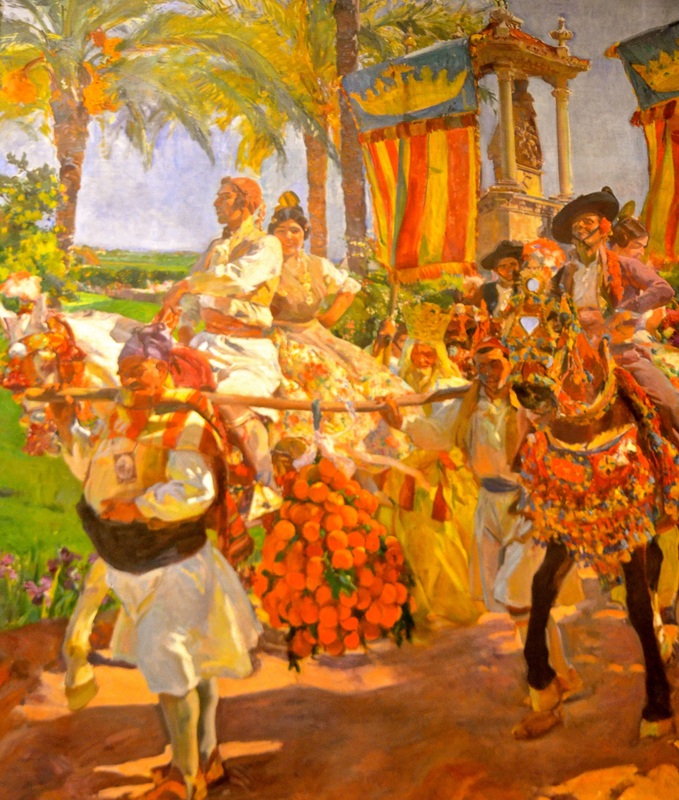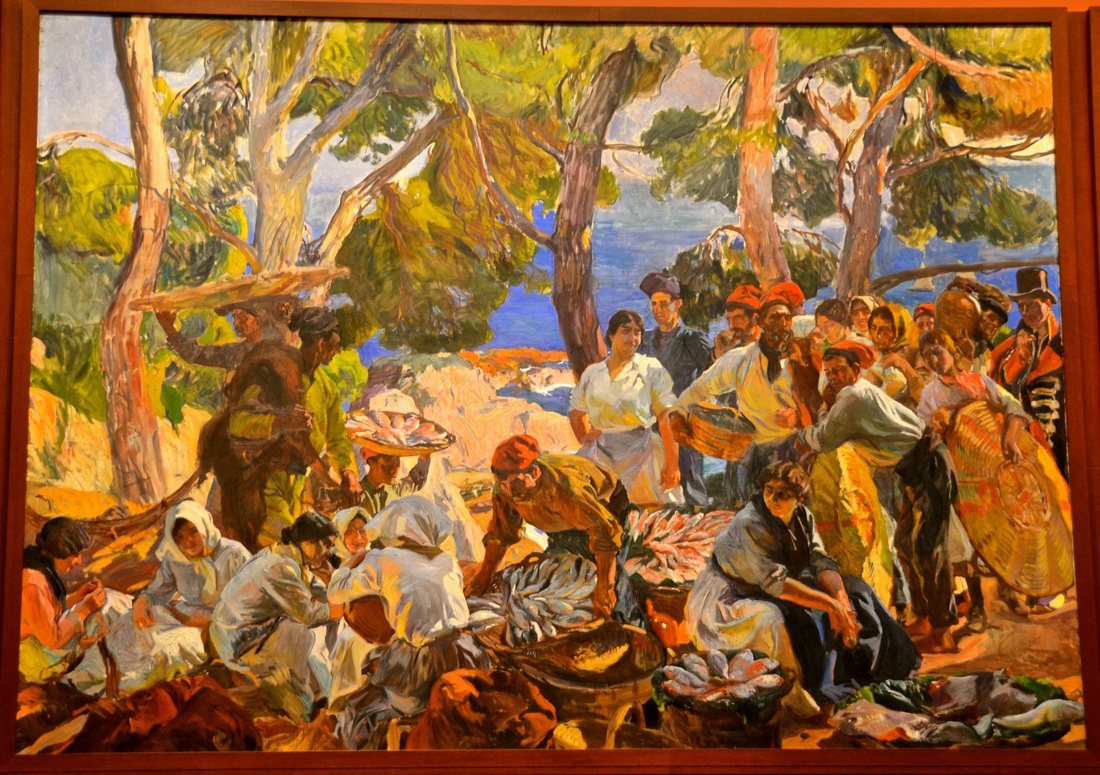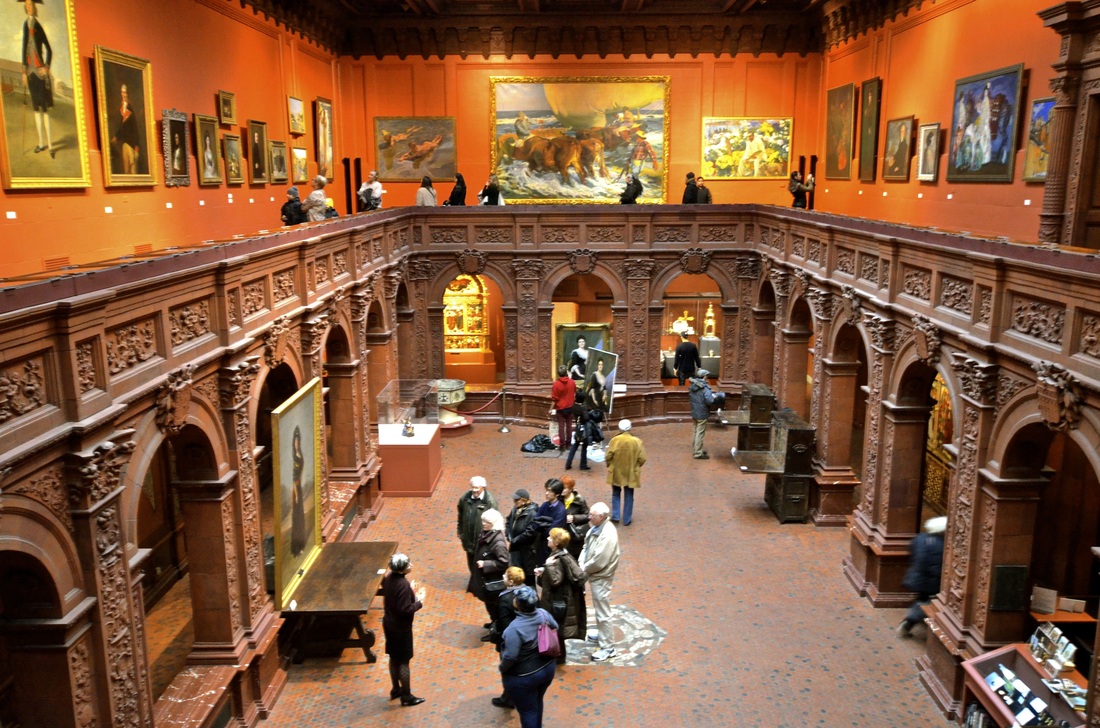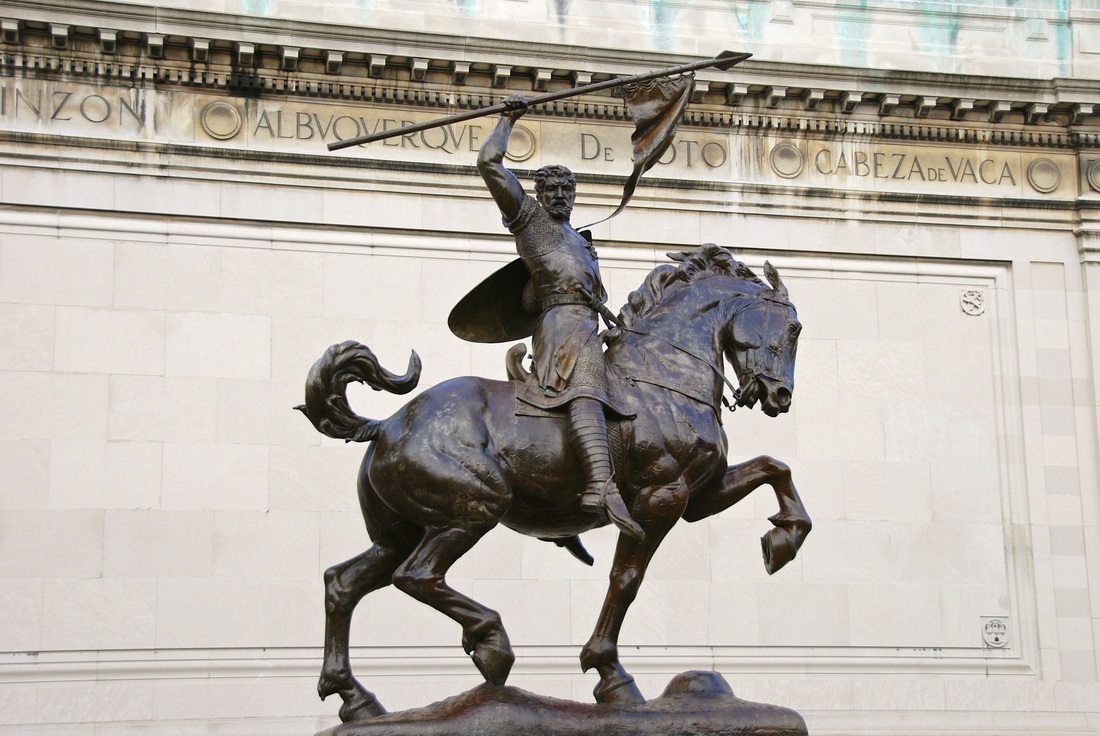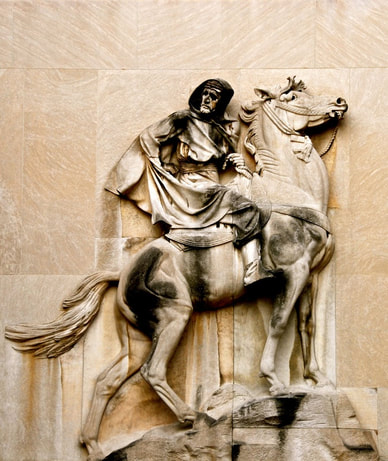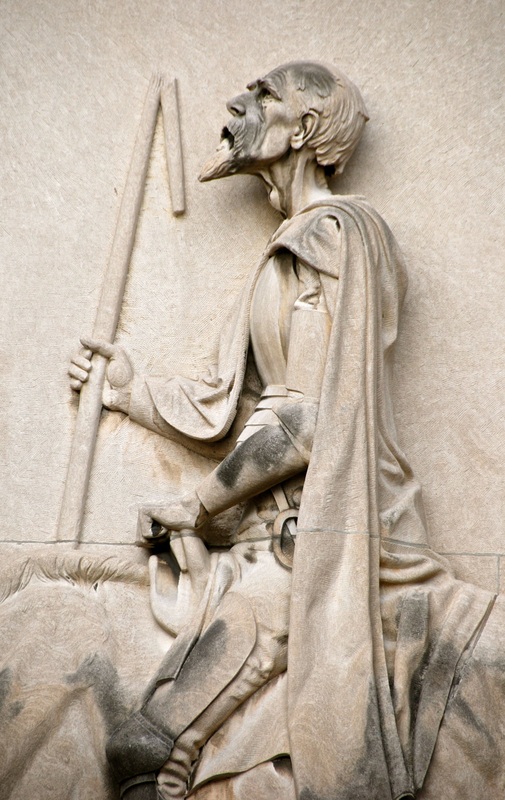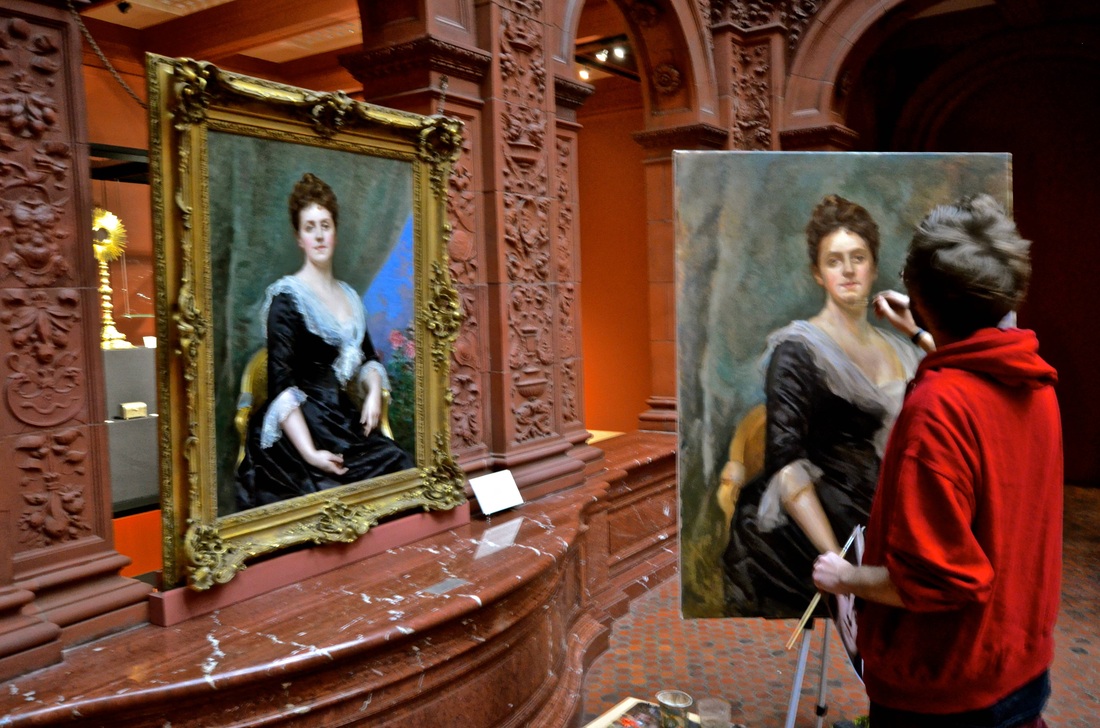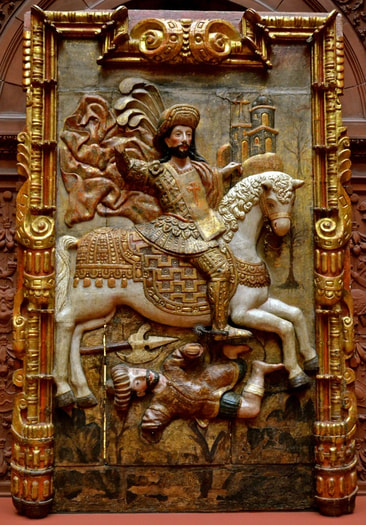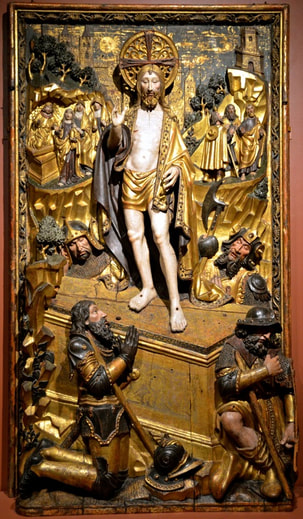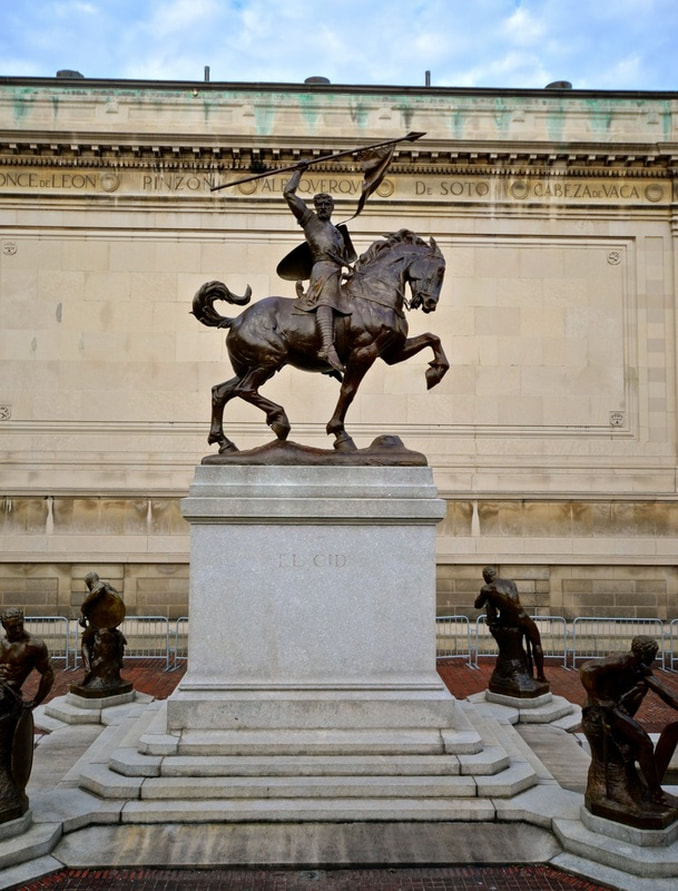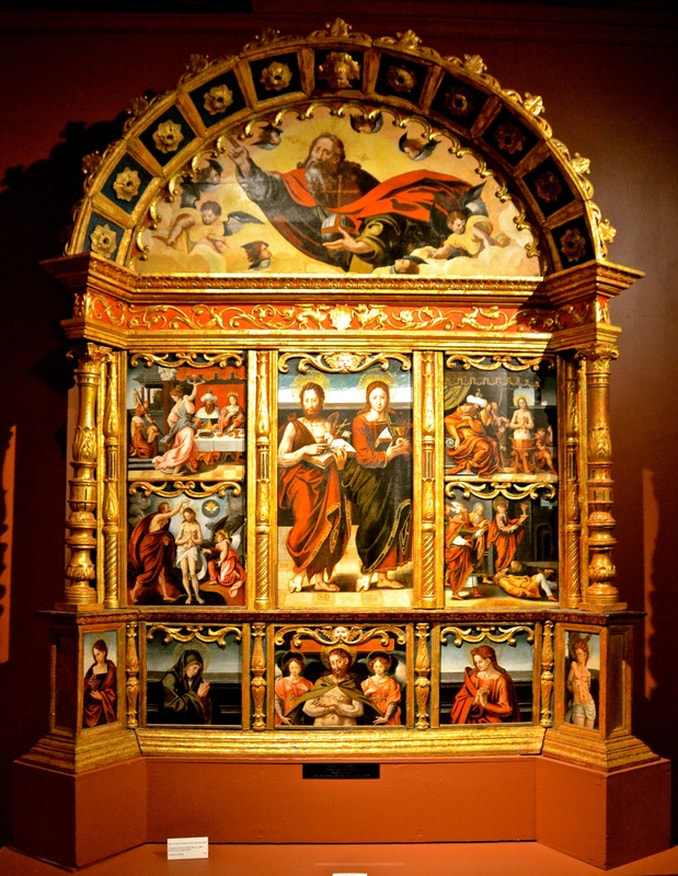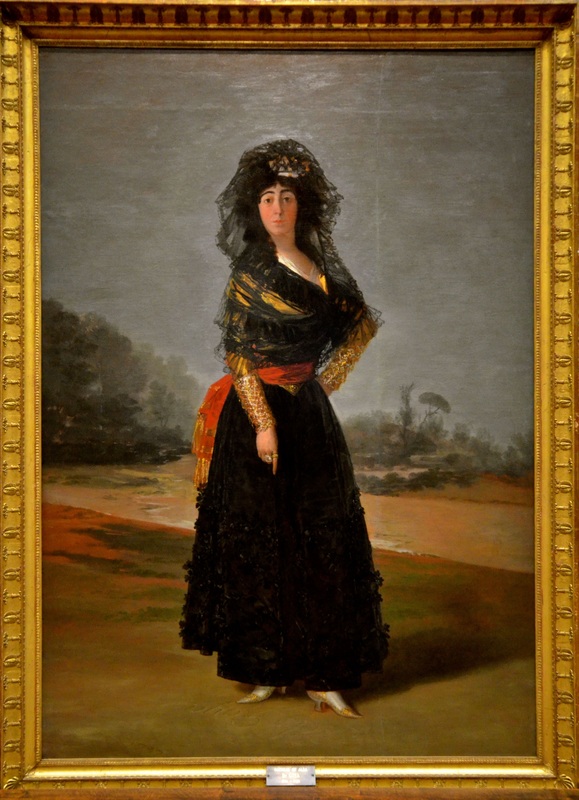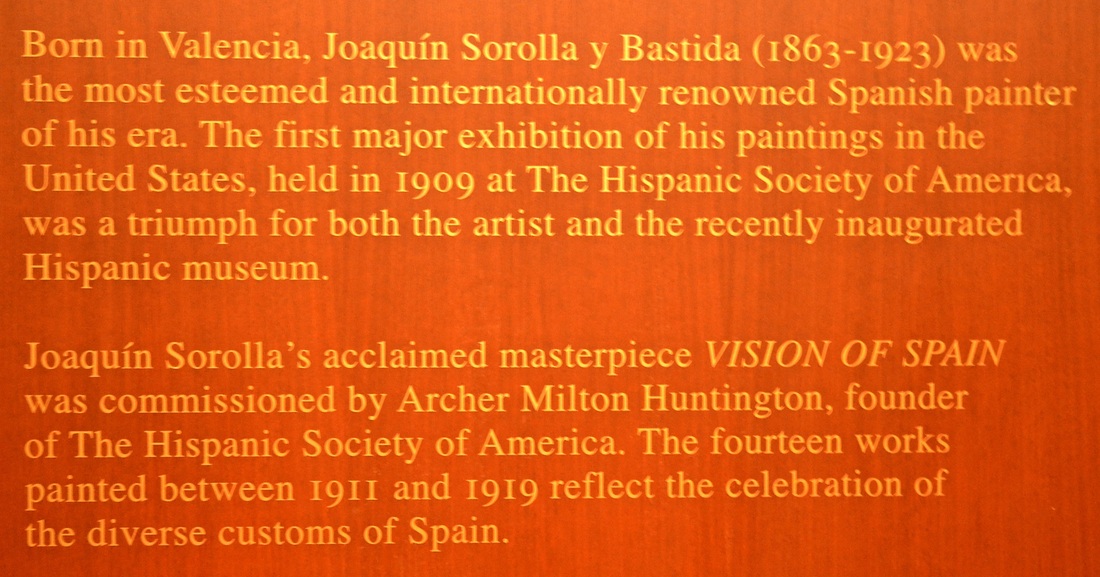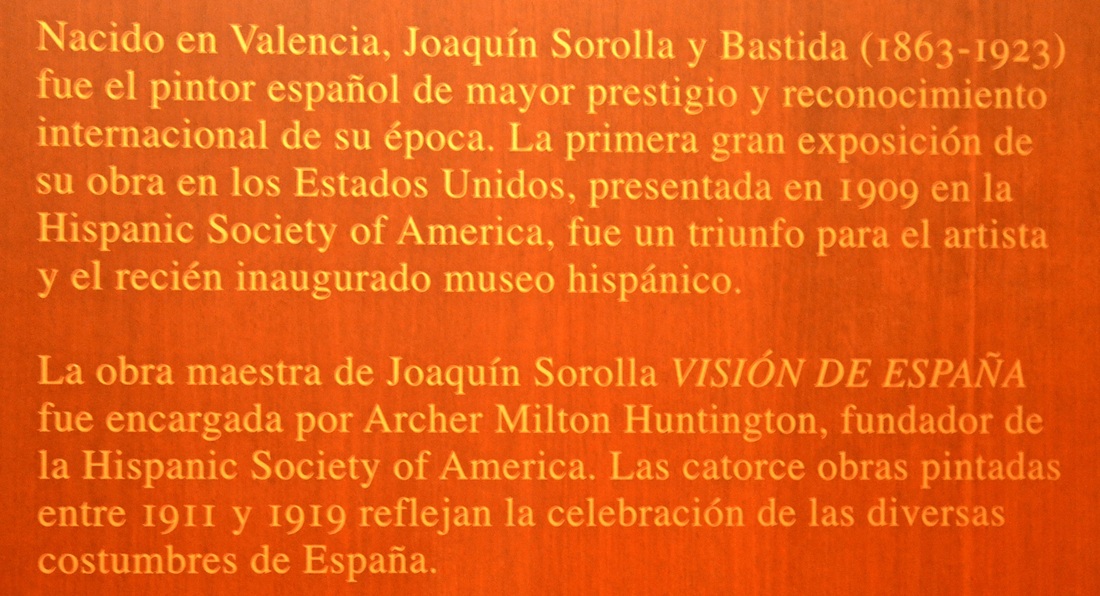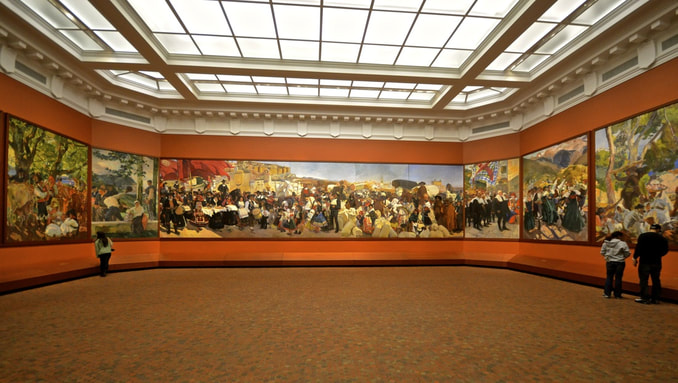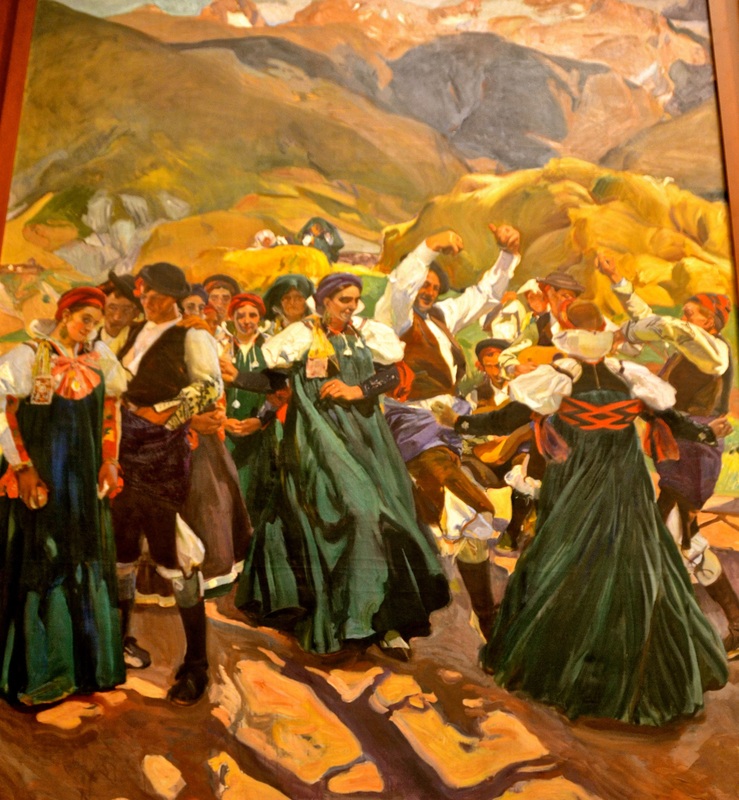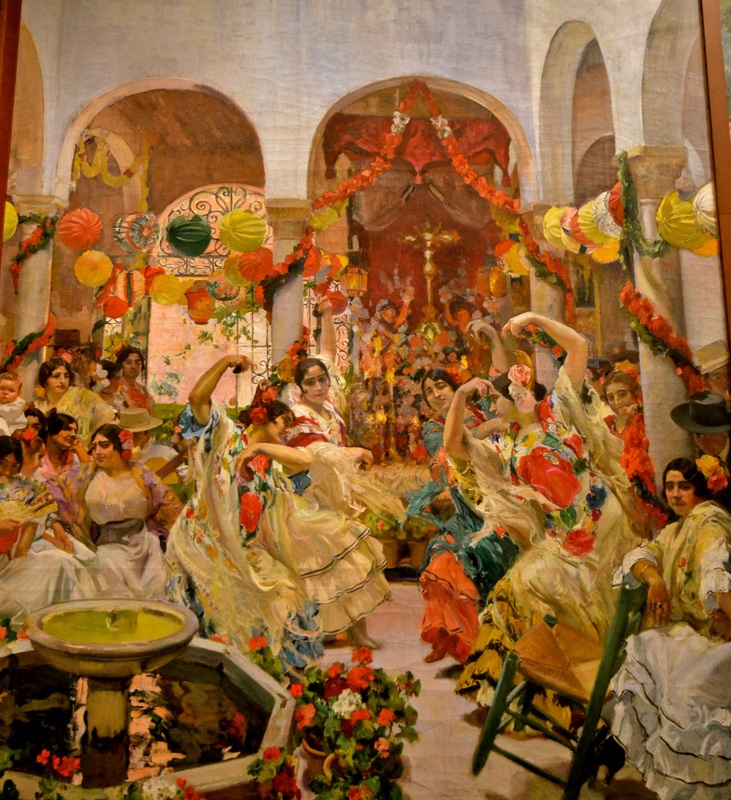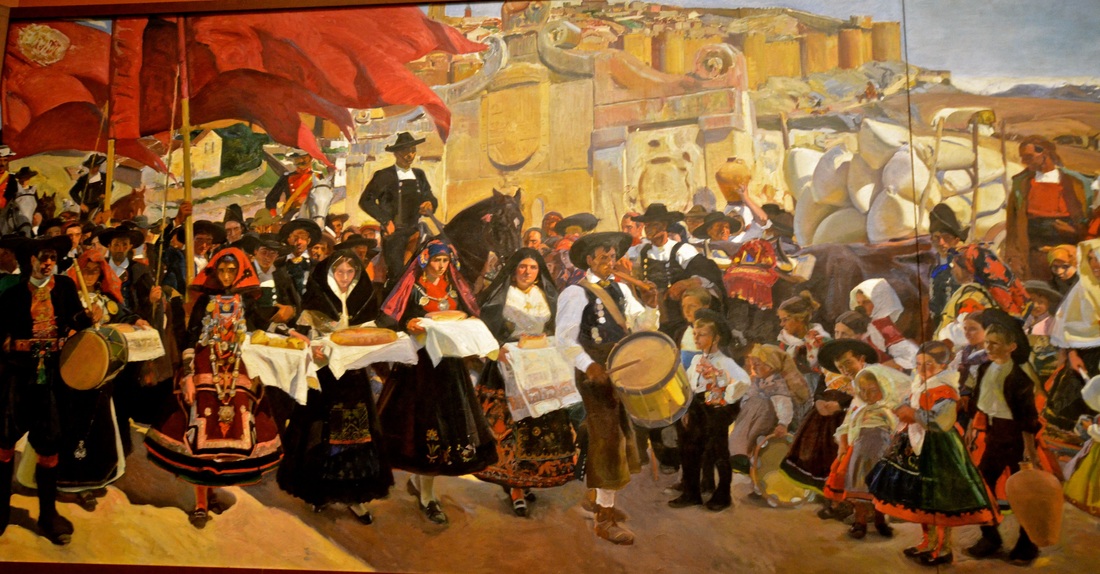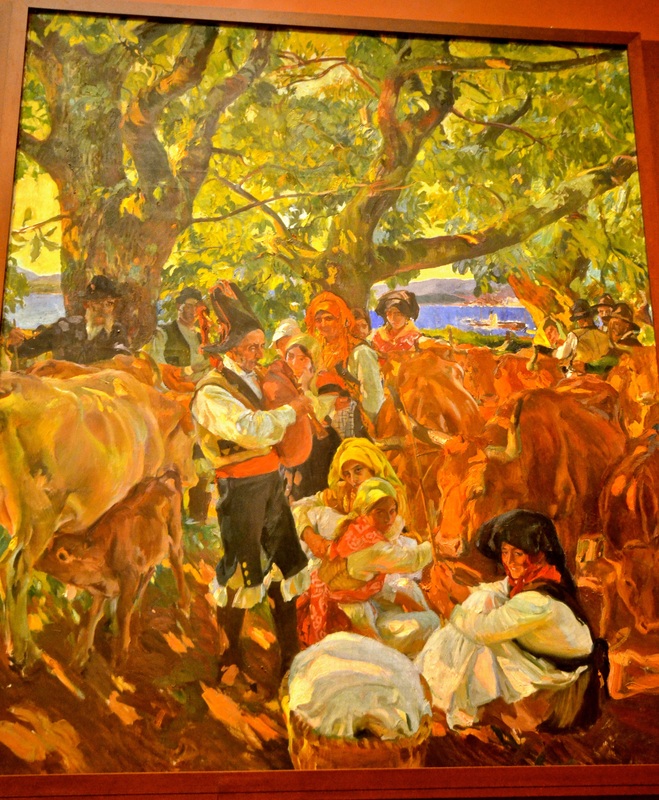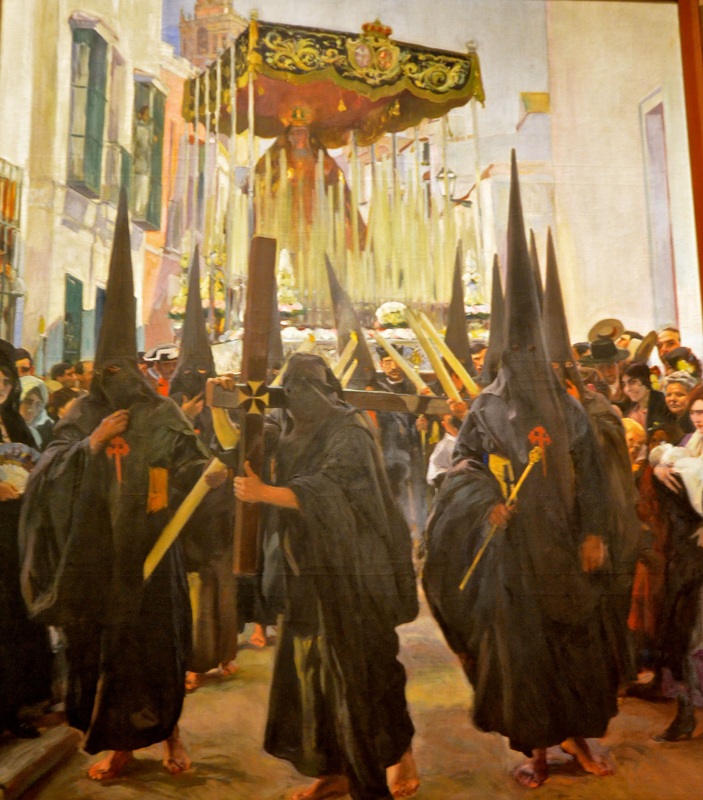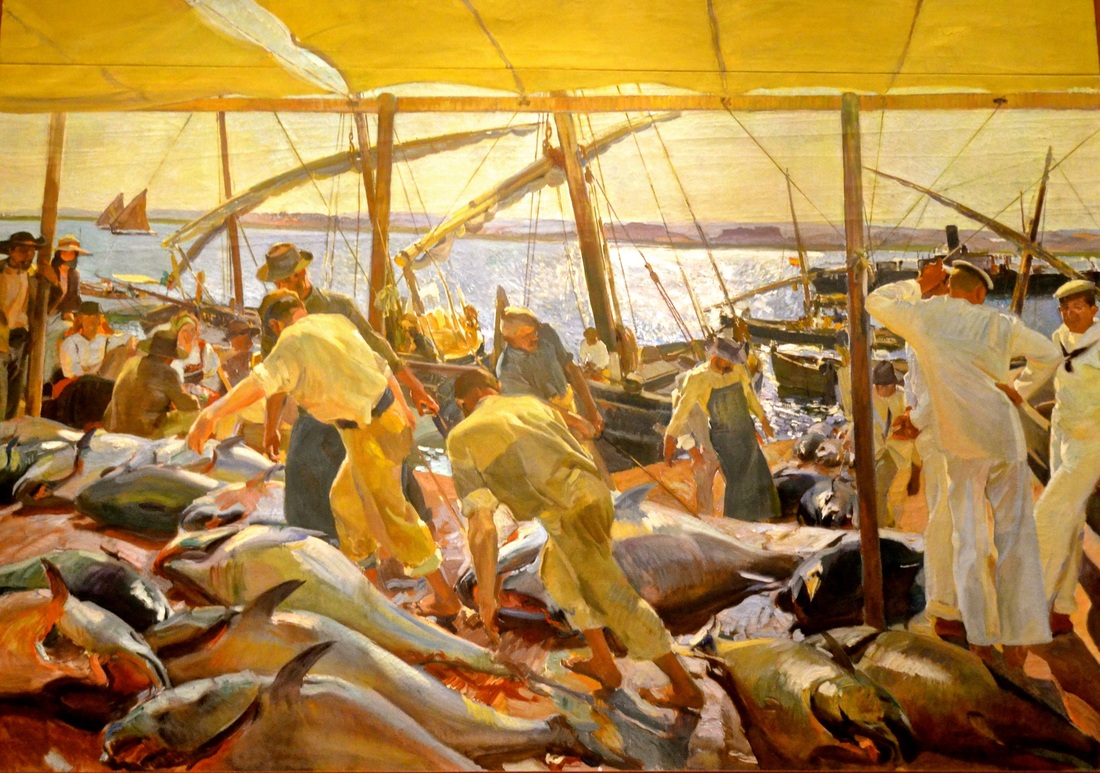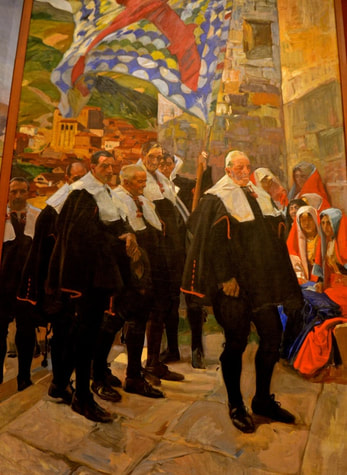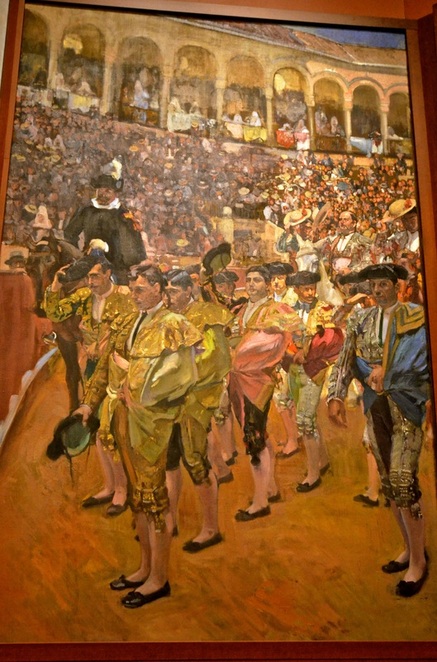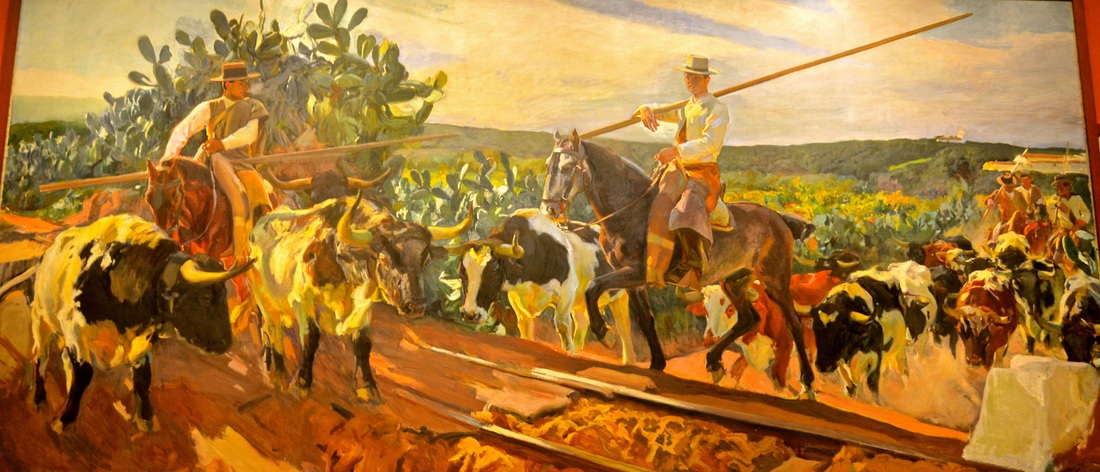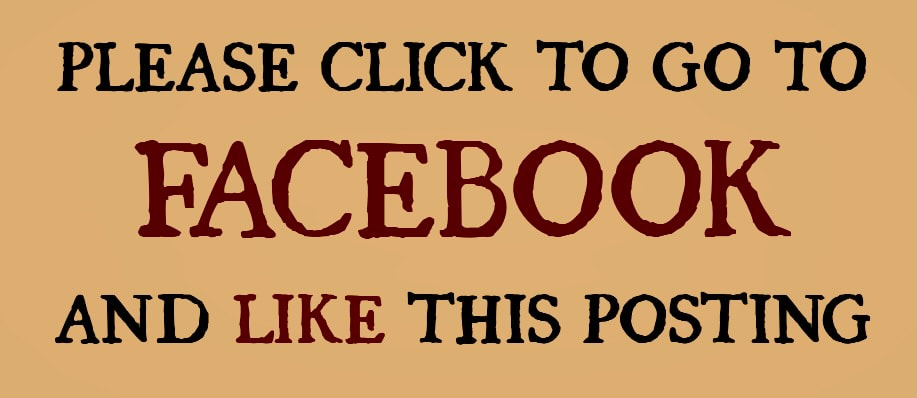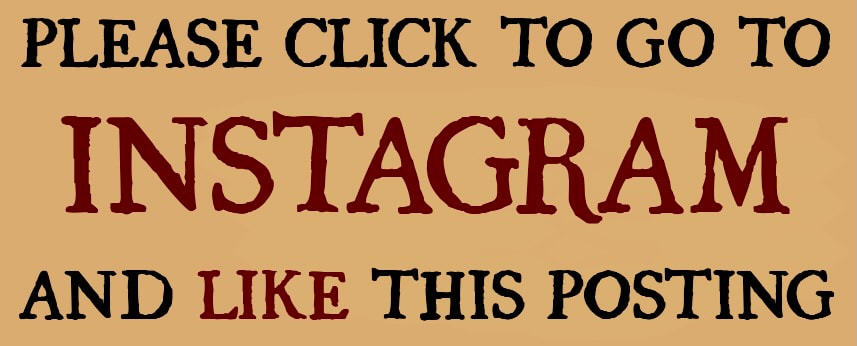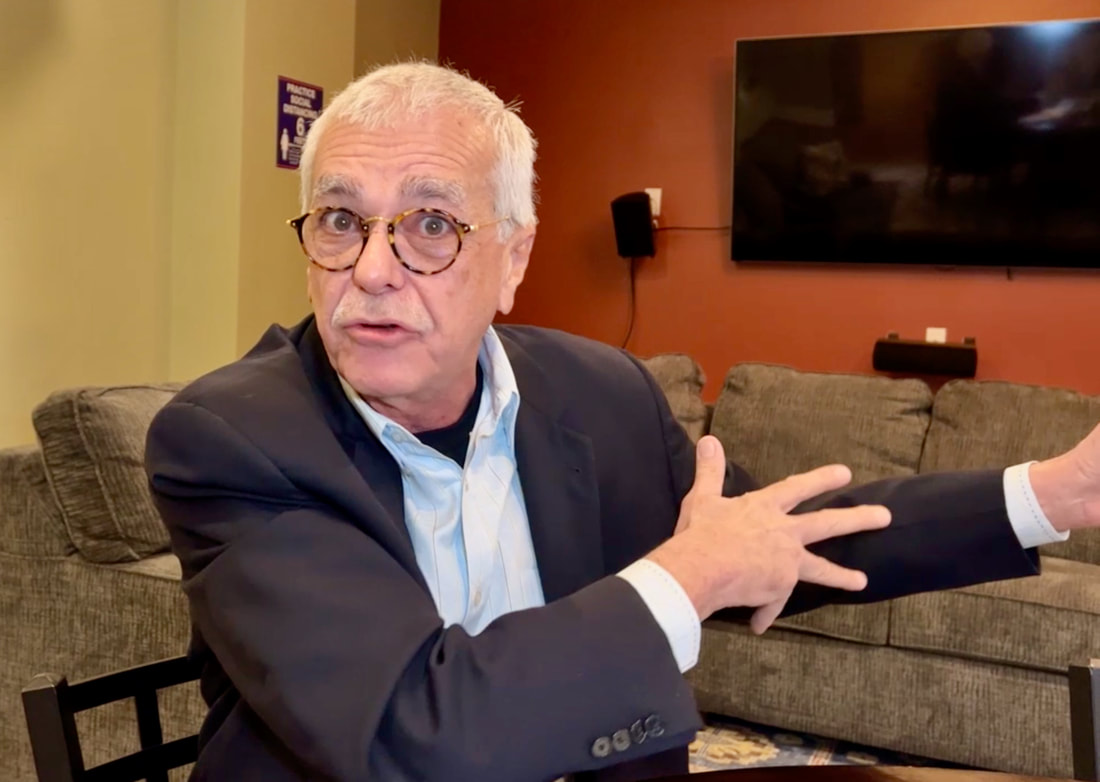28. Our Hispanic heritage:
On Exhibit and Yet Hidden
|
By Miguel Pérez
On a concrete courtyard in upper Manhattan, a group of Hispanic boys were playing stickball, totally oblivious of the treasures that hung on the other side of the walls that embraced their play area. "Do you know what's inside?" I asked them, pretending to be clueless and pointing to one of the buildings. "Some kind of museum," one of them responded. "You don't know what kind?" I insisted. The boy shrugged his shoulders and went back to his game. Sometimes our Hispanic heritage is hidden right before our eyes! On the other side of that wall, there are masterpieces by Goya, El Greco, Sorolla, Velazquez and Murillo. There are Spanish paintings, drawings and sculptures dating back to the Middle Ages. There are prints, textiles, metal works, ceramics, glass and many other unique antiquities by Spain and Latin America's most prominent artists. There are more than 600,000 books, manuscripts, documents and letters that go all the way back to the 10th century. They were playing stickball in the courtyard of the Hispanic Society of America Museum and Library, right in front of an impressive statue of the legendary Spanish liberator El Cid, and they had no clue that they were only a few feet away from a fountain of knowledge about their own heritage — "the most extensive collection of Hispanic art and literature outside of Spain and Latin America." But I couldn't blame those boys for not having discovered their roots. I couldn't even blame their parents when they too are oblivious to having such an amazing place right in the middle of their predominantly Hispanic neighborhood of Washington Heights on the upper west side of Manhattan. After all, as luck would have it with most things that have to do with Hispanic heritage, this wonderful museum and library has long been regarded as one of the "hidden treasures" or "best kept secrets" of New York City. Art critics and travel writers usually blame its obscurity on its location, which is on Broadway, between 155th and 156th Streets, near the George Washington Bridge. Since it's in the middle of the city's Dominican-American barrio, a few miles north of the many midtown Manhattan museums frequented by New York tourists, this museum is visited by considerably fewer people than even the less important galleries in Midtown. But it's not just the tourists that miss seeing the largest collection of Spanish treasures this side of Madrid's Museo del Prado. Amazingly, most New Yorkers, including many Latinos, don't even know it exists! This proves that to rediscover America's hidden Hispanic heritage, sometimes you don't have to travel a long distance to some remote Spanish mission in the Southwest or California, to Old San Juan or Santo Domingo's Zona Colonial, or to the first permanent settlement in Florida. Sometimes, even if you live in the Northeast, there is hidden Hispanic heritage just waiting to be rediscovered. "We are a rare books library. ... We are a prints and photographs department. We are a study center, particularly medieval studies. ... We are a publications program, and we are a museum — so there is an awful lot going on under the roof and a lot that people don't see," explains Marcus Burke, the museum's senior curator. "Although anyone can go in the library, it's open on demand to any adult with a serious interest in Hispanic culture." But what about the youth? What about the stickball players I met a few years ago? In the past few years, Burke says, things have changed dramatically. "We have an extremely ... proactive education program," he says. "We go out to local schools. We bring school children in constantly." While many tourists still may stay in Midtown, the museum has embraced the Dominican-American community that surrounds it. Now the museum recognizes the huge potential of being in a neighborhood of immigrants who came to came to New York with a good understanding of their Spanish colonial heritage. "We have the great fortune to be in the middle of a Dominican barrio, and it has made all the difference where we are," Burke says. "It's just been wonderful, the result of that group coming in." He says several museum employees now are Dominicans, and new collaborations have been initiated with art institutions in the Dominican Republic. He says now community music and dance groups are frequently asked to perform at the museum. "So this is something we are very aware of indeed!" he adds. As you enter the Hispanic Society of America, where admission is free, you feel yourself going through a time warp that takes you back several centuries, not unlike the time travel one makes when entering the Spanish churches and mission throughout the Southwest and California, or the Castillo de San Marcos Fortress in St. Augustine, Fla. Once inside this time warp in upper Manhattan, one is immediately confronted with the museum's most renowned painting: Francisco de Goya's "Portrait of the Duchess of Alba" (1797), a lady dressed in black and pointing a finger to the floor, as if imperiously demanding that you kneel before her. But even before you can begin to behold the many treasures on exhibit there, you can't help being awed just by the hall itself. With its galleries walled with intricately carved terra cotta wood, it's like entering an ancient cathedral during Spain's Gold Age. As you walk through, you may be struck by Diego Velazquez's amazingly vivid "Portrait of a Little Girl" (c. 1638-44), which is believed to be a portrait of his own granddaughter. Or by El Greco's "Holy Family." Or by an entire room where the great Spanish impressionist Joaquin Sorolla y Bastida (1863-1923) presents his "Vision of Spain" in 14 huge canvasses depicting the people, landscape and culture of the various regions of Spain — from fishermen to cattle ranchers, from bullfighters to flamenco dancers. "We are also the guardians of an immense number of objects," Burke says. "In the library alone, we have 15,000 rare books (published) before 1700. That's a collection the size of the national library of Spain." In this library, you are likely to find the first editions of some of the most significant works of Spanish literature, from "Don Quixote" to "Celestina" and "Tirant lo Blanc." It has 20,000 other rare books from 1701 to 1830, and more than 300,000 other books focusing on Hispanic culture and published since 1830. It has 125,000 Latin American big band recordings, 225,000 manuscripts going back to the 12th century, letters from Elizabeth of England to Philip II of Spain, the signatures of the conquistadores, 17,000 prints and posters, including most of the works of Goya, 150,000 ethnographic photographs going back to the 1840s and a map of the world that was drawn in 1526 by Juan Vespucci, Amerigo Vespucci's nephew. And this world-class museum is constantly lending portions of its massive collections for special exhibits in museums, libraries and other cultural institutions around the world where, ironically, they often get better exposure than they do in New York. Sorrolla's "Vision of Spain" may not get many tourists from Midtown, but when the collection went on a tour of Spanish museums, it broke attendance records, becoming one of the most successful exhibitions in Spanish history. Housed in an impressive Beaux Arts complex called Audubon Terrace, where the names of the conquistadors are carved on the walls, the Hispanic Society was built in 1904 by Archer M. Huntington, the heir of a vast railroad fortune and a lifelong lover of Spanish art and culture. He wanted to establish a center that would collect, care for, study, interpret and exhibit the cultures of ancient Iberia, Spain, Portugal and Latin America. And more than a century later, it's great to see that other non-Latino scholars still are accomplishing his mission — including people like Mr. Burke and his colleagues, who are not all Hispanic and yet are great champions of Hispanic culture. (See my recent TV interview with Mr. Burke, at http://www.youtube.com/watch?v=i-q3o-3F_xA) "North Americans tend to think of ourselves as 'America,' right? But it was Latin America that was the first America," Burke says, explaining that Latin America had art and culture long before North America. "And it's that America that we exhibit — the first America." And that makes me a huge fan. For my series of columns in search for "America's Hidden Hispanic Heritage," I expect to spend more time in New York's Dominican barrio, where that heritage is waiting to be rediscovered. Stay tuned. I'm going treasure hunting in upper Manhattan. COPYRIGHT 2013 CREATORS.COM |
En español:
|

